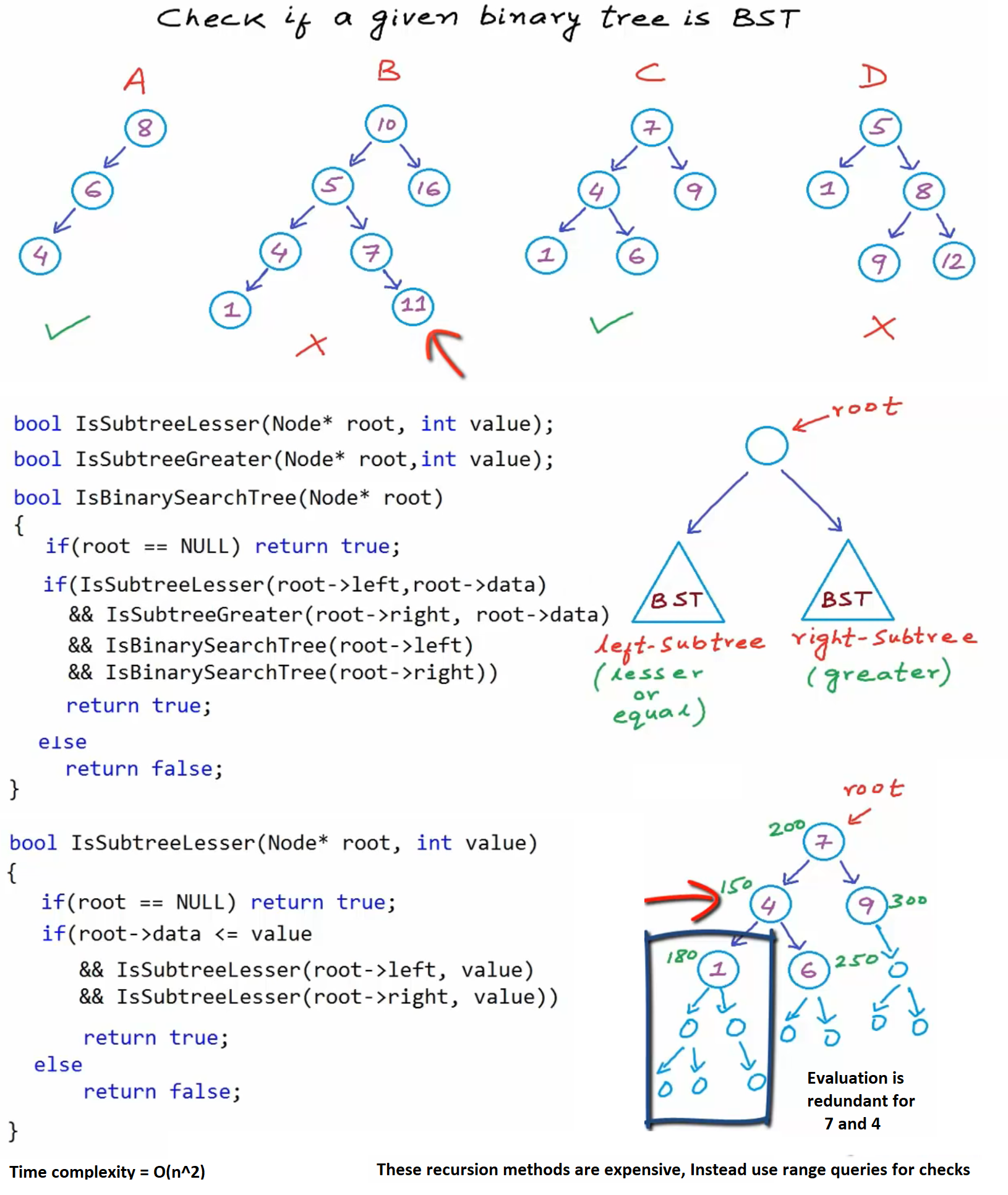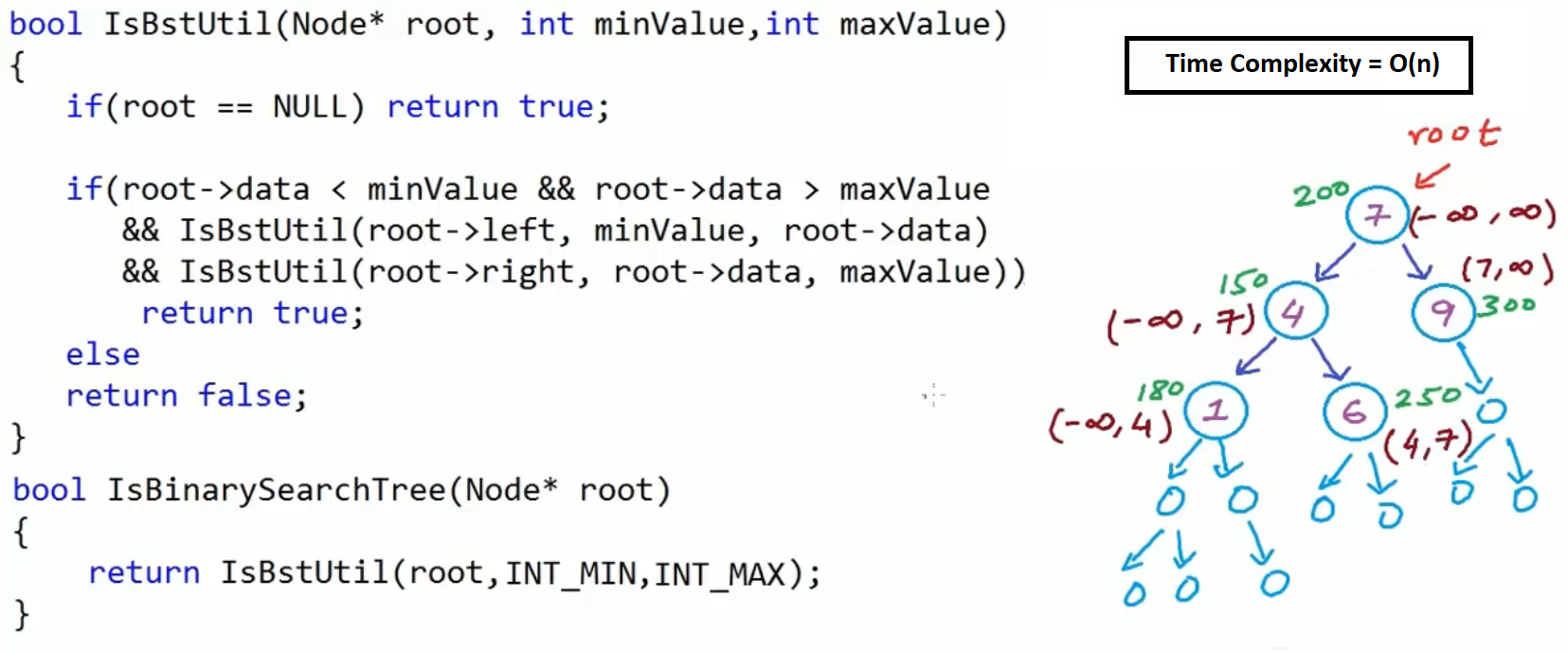BST - Binary Search Tree
- For each node,
left < rootandroot < right. - left and right subtree must be BST.
- left-subtree < parent < right-subtree.
- BST provide moderate access/search (quicker than Linked List and slower than arrays).
- BST provide moderate insertion/deletion (quicker than Arrays and slower than Linked Lists).
- main use is in search application where data is constantly entering/leaving and data needs to printed in sorted order.
- example: e-commerce websites where a new product is added or product goes out of stock and all products are listed in sorted order.
| Time Complexities | |
|---|---|
| Search | O(h) |
| Insertion | O(h) |
| Deletion | O(h) |
| Extra Space | O(n) for pointers |
| h | Height of BST |
| n | Number of nodes in BST |
| Height Balanced BST | h = O(Log n) |
Self-Balancing BSTs such as AVL Tree, Red-Black Tree and Splay Tree make sure that height of BST remains O(Log n)
Binary Search Tree (BST)
- BST
- left node <= root
- right node > root
BST Implementation
- Dynamically generated nodes
- arrays - used for heaps
Array Implementation
- number the nodes level-wise.
- for complete binary tree
- left = 2i+1
- right = 2i+2
BST Operations
BST Traversal
Breadth First Search
- Level Order Traversal
Depth First Search
- Preorder traversal - dLR
- Inorder traversal - LdR - Ascending Order
- Postorder traversal - LRd
- Time Complexity - O(n)
- Space Complexity - O(h)
- Worst - O(n)
- Average - O(log n)
isBST Check

Use Range query rather than isSubtreeLesser and isSubtreeGreater.

Delete Node
- if leaf node, delete it.
- if having single child, set single child a subtree.
- if 2 child,
- set current = min(rightSubtree) and delete that value in right subtree.